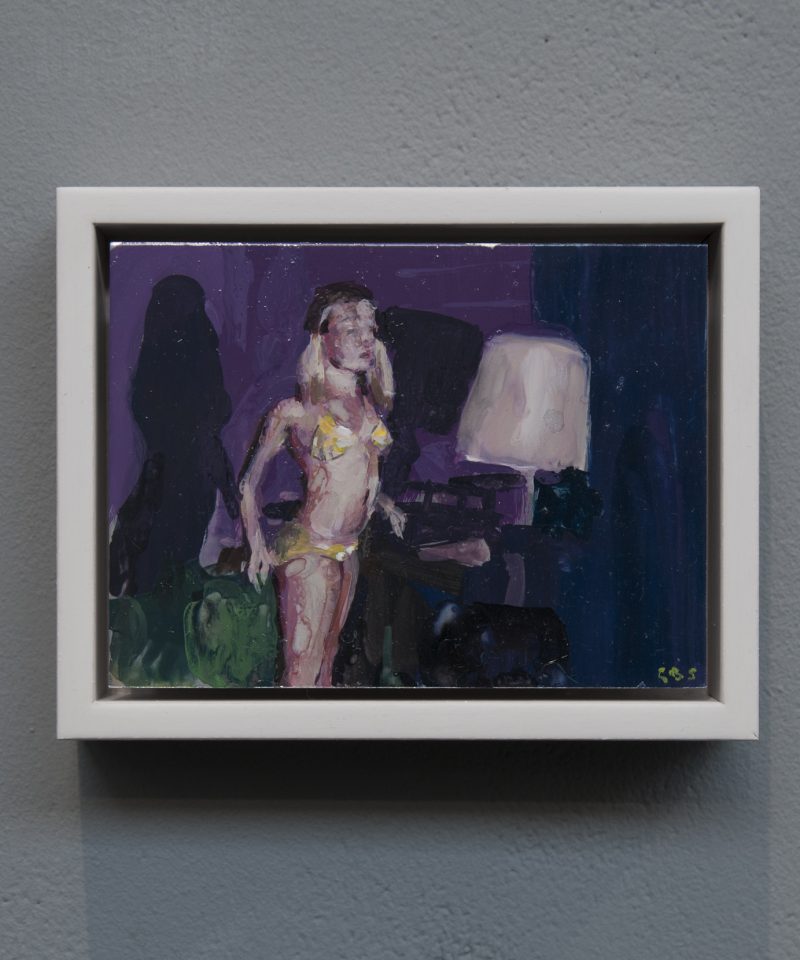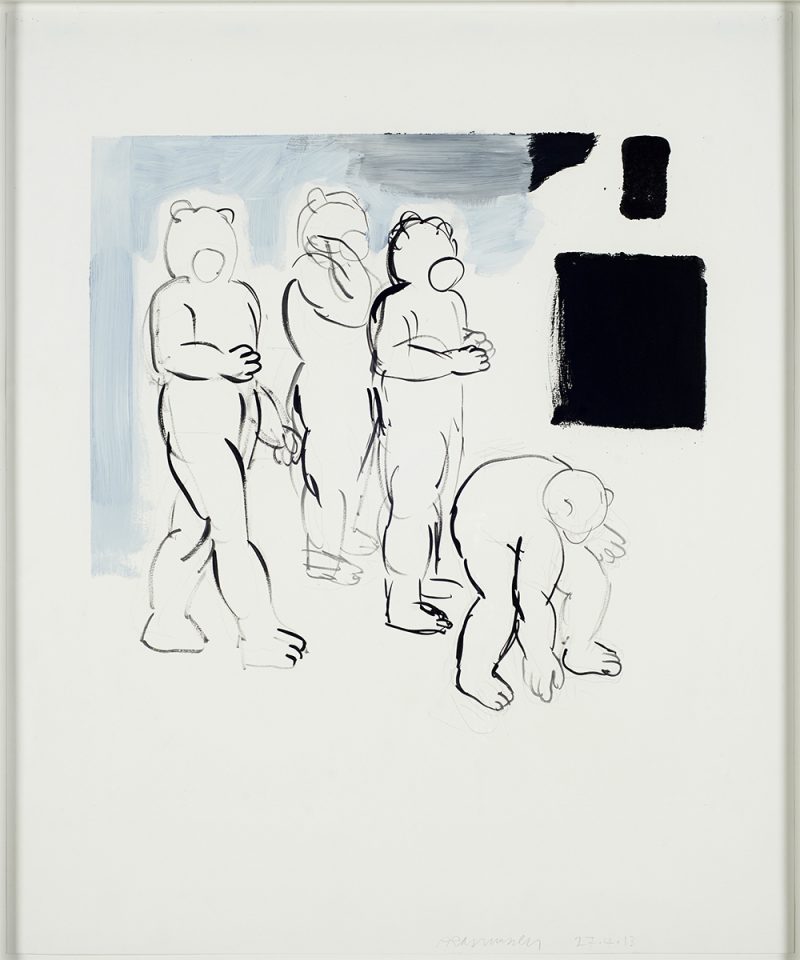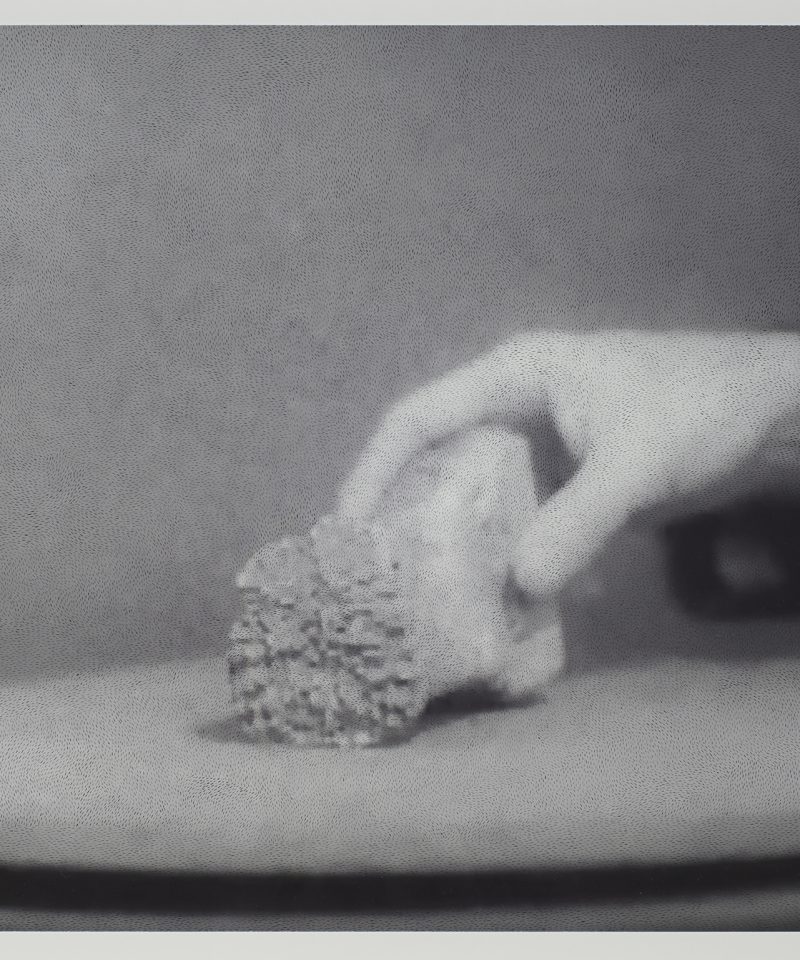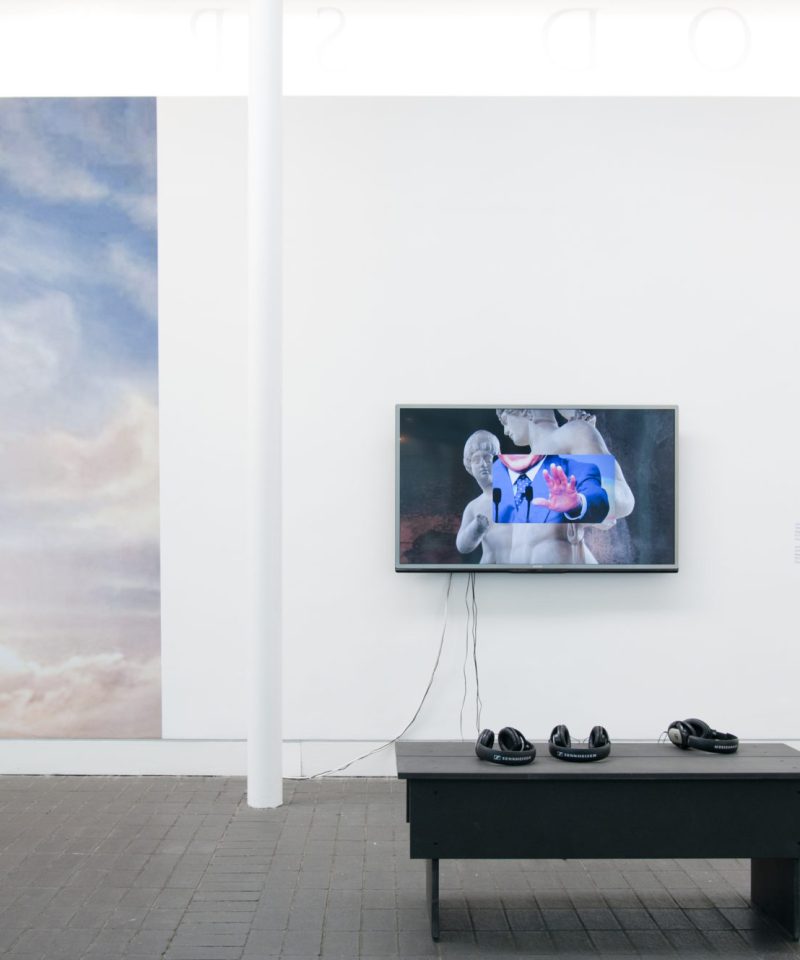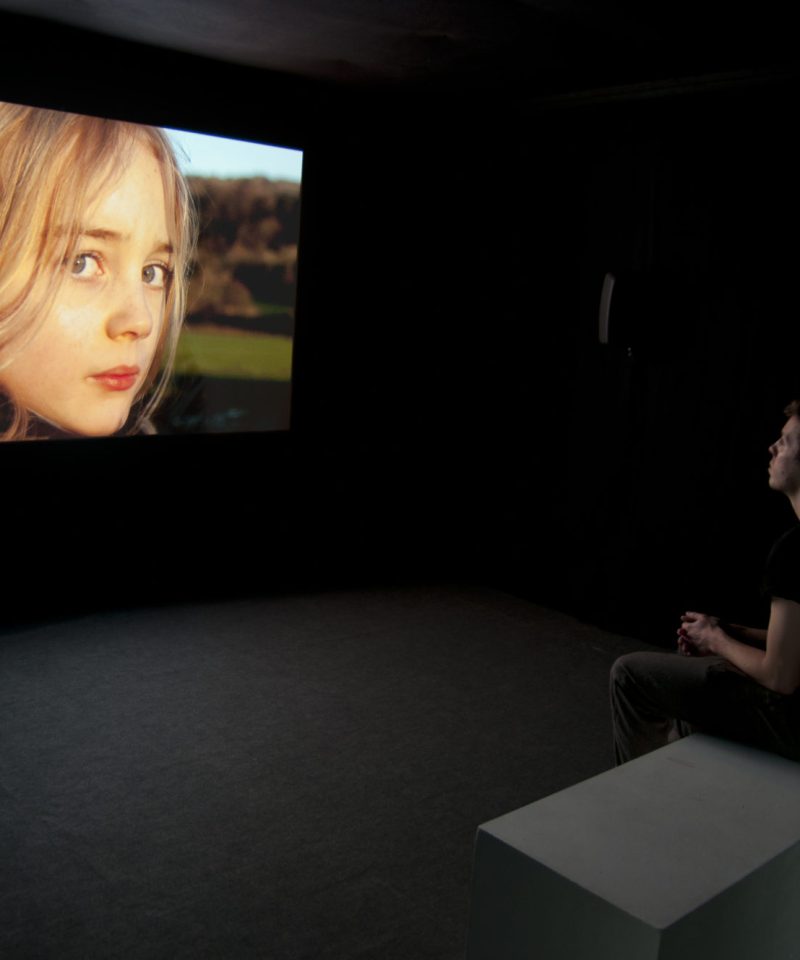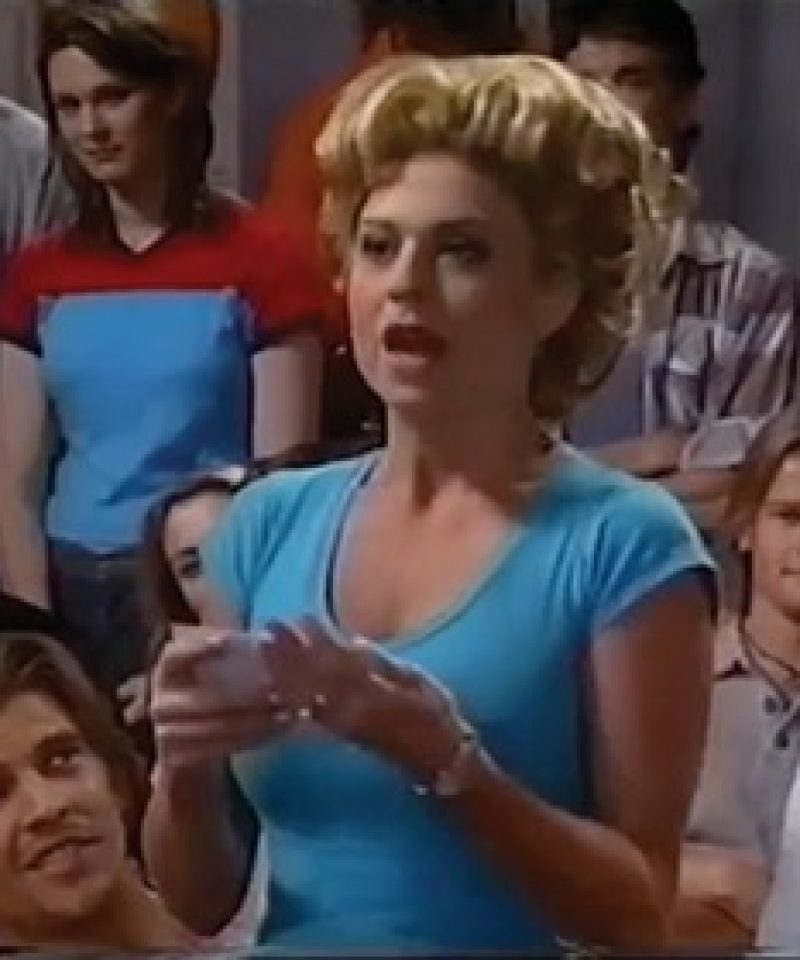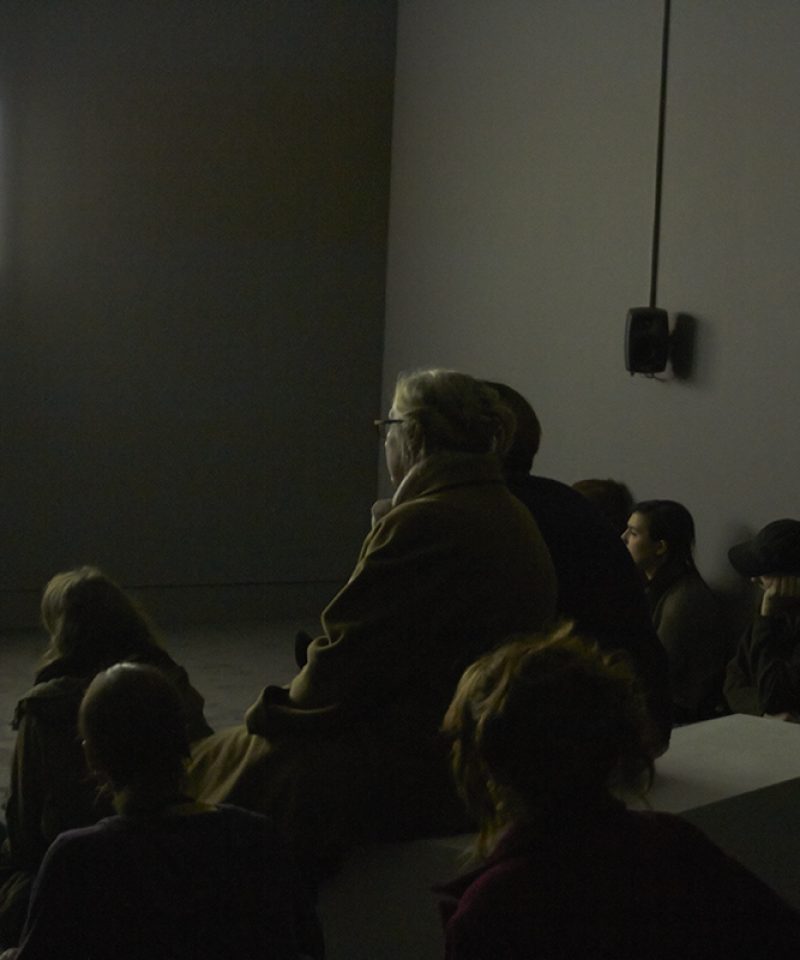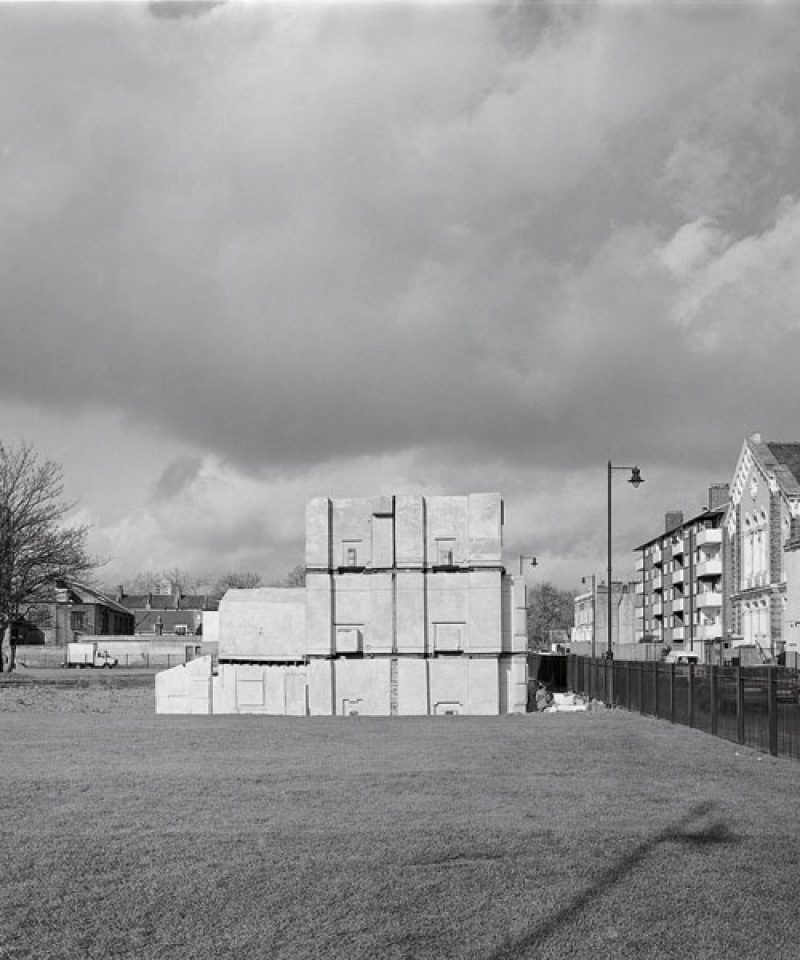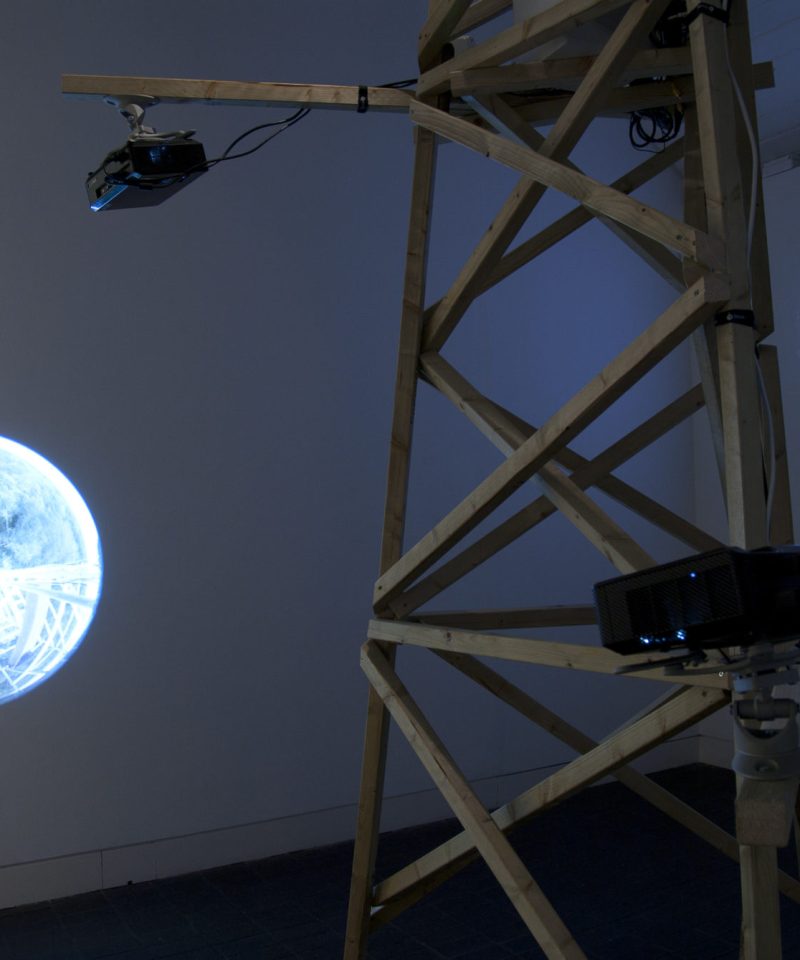Unknown Species in Full Resolution is 4 mins long – the length of a TV commercial break, but the models and narration are selling digital post-production rather than fashion or cosmetics. Can you tell me more about the flow of digital image projections of ourselves compared to our interactions in real-time?
When I approached producing this piece I had been interested in how we might occupy images to create new forms of agency, how images in themselves perform and how this is divorced from what they represent. I wanted to explore surface using a particular set of tools; creating images that were instantly recognizable from mass advertising whilst at the same time combining abstract liquids within the same frame as the performers. The product shot is usually kept quite separate from the models in commercials and as I started to combine the liquids and the women and became interested in strategies that allow us to refuse or re-direct our own image. I wanted to create silent images, images so recognisable that they almost disappear in this intangible flow of liquid; in turn becoming a substance for the performers to camouflage themselves with; a technique of survival.
I liked the idea of the film commission being a proposal and I approached it as a set of questions; slogans embedded with this extended trailer. I have also been exploring what forms of labor have been re-directed as art practice within more mainstream culture. The production of yourself and your image becomes a kind of labour. How you might harness your digital image in new ways and create strategies in which to do this, to refuse work and refuse labor and refuse the production of your own image.
Is beauty only as deep as your skills in post-production? Does having a digital double offer us more possibilities to act in the world?
I guess this question comes back again to agency and asking what room to manoeuvre we have. I’m glad you mentioned mass advertising as I was interested in these kinds of fictional spaces and how they could be hijacked. The language used in some mainstream adverting campaigns talks of digital technology and the production of your own image being more important than the real life skin you live in. Again, I thought this was fascinating, as advertising now completely understands the values of our individual digital image production and is selling it back to us. Advertisement’s use of this absurd ‘bio-tech’ language – a fiction itself – along with this constant abstract creation of CG images really appeals to me. I felt there was room for a re-thinking of this fiction, and a starting point was thinking what would happen if artists occupied certain mainstream brands.
Thinking about what Hito Steyerl says about image spam, I really like the idea of these lost images having a use, something seen as obsolete having a function which is maybe separate from what they actually represent. As I mentioned before, I’m interested in how images perform and are distributed and how it’s no longer really related to the images themselves. The idea of digital doubles and new ways of moving producing multiples really appeals to me and in that way I feel like the film is a proposal to think through some of these ideas. I’m also fascinated at how we are all amateurs yet highly sophisticated in how we augment and post produce our own image. I like the idea of your image doing work for you and how you might be able to re-think its function.
You’ve described previously how images of ourselves accrue a kind of ‘capital’. How does this concept relate to the position of art and artists in the wider economy?
We can take the figure of the freelancer or ‘creative’ worker as a model that has been adopted directly from the economy of the artist. We all carry around and accrue a capital as mass consumers, with everything we do being ‘creative’ and every part of our lives a kind of negotiated labour.
This constant influx of work taking over every aspect of our lives has huge implications for most people I know, with serious ramifications – such as on our mental health. However I’m also genuinely intrigued by what this means for the creative work that artists produce. What autonomy do we have and how do we understand formats and structures now available for artists? One of the reasons I have been working with Auto Italia for many years – and working through the framework of collaborative projects – is because of the particular freedom it provides us with to make work. It provides an opportunity (and more crucially a degree of autonomy) to dictate the formats and approach to the way to work. I’m interested in refusing certain types of labor, taking control of the means of production and forming new systems, communities and ways of being.
In this piece I’m addressing advertising to a certain extent, but I think it is important to mention that most of the artists I work with also work within these economies and I’m interested in the possibilities of how this might produce new structures for producing art. One example I think of is the designers Metahaven. They collaborate and produce commercial work through their design studio responding to briefs but also produce a critical artistic practice. I think this is a really fascinating model as it is at once both commercial and critical and I feel like they negotiate it in an interesting and uncompromising way.
To return to the piece I made for the FVU/Jerwood project, I wanted to explore how much our own bodies are related to us as workers, how we have to constantly perform being artists and to think this through with women who have to use their own bodies to perform.
How come you chose to focus on women in this piece?
I wanted to distill so many ideas and produce a really precise piece. One of which was a return to what this type of performance of labour means for women and what type of work we label women’s work. I really wanted to think this through in the film with a group of female performers and in my case commercial models.
The film naturally developed out of a couple of projects I have been involved in over the past few years, particularly thinking of a collaborative piece we presented at Tate Modern called IT’S LIKE STARING SOMEONE OUT WHO ISN’T EVEN LOOKING AT YOU. The project came out of working with Cinenova and was a way for me and two other artists (Leslie Kulesh and Jess Weisner) to respond to the their archive and really think about what it means for women to produce moving image now. Although that performance is now a few years old I think it brought up lots of interesting conversations, particularly about digital representation of women what agency images have and what that might mean for a wider community. There was a quite heated conversation which took place after the performance that really stayed with me, which was essentially a cross general debate about what images and digital representational meant which I felt really at odds with.
For this piece I was thinking about really early work I had made with young women and I wanted to think what those images might mean now, and what means of production younger women might have in a performance of the self. I focused on a certain space within commercial production which is now more than ever increasingly available domestically and I was interesting in exploring particular images, fashion, pop music, averters, beauty campaigns and the role of the female model within that considering digital representation and how these relate to our own bodies. I wanted to explore this idea of surface of highly post-produced image as something we invade. How could the images themselves be manipulated? I wanted this liquid material to be inserted within the same frame of the images of the models as an act of refusal through not allowing their image to be completely presented.
The soundtrack is very minimal but full of suspense. Can you tell me about how you conceived of the sound and image working together?
I haven’t worked with sound very much before so it was a really great opportunity to work with someone on this piece. I am fascinated by how sound produces affect and wanted to really try and have something that made you experience the images differently. For me I guess I’m really interested in cinema and moving image in general – specifically how sound and images work together on a very basic level and what kinds of affect they produce. I really wanted to try out something different with this commission and it was really great to experiment with someone.
I worked closely with a brilliant sound designer Shervin Shaeri who mainly works in advertising as well as working and collaborating with artists. We talked a bit about the parameters of working commercially and the length of certain and type sounds used to create certain viewing attention- and it was great to have something to play with and react to this certain set of parameters. I guess I worked with the sound in a slightly similar way to the images, inhabiting as well and reconfiguring them for the piece.
The last line read by the narrator ‘Some people feel a basic minimum wage would lead to more people shopping’ is dystopian but also, probably, true. Can you talk about the work in relation to sci-fi?
Sci-fi is interesting because it is always about imagining new futures but as a way of narrating the present. I like that sci-fi brings genres together to comment on the current world we live in. There is this great paragraph in the Momus Book of Japans (which annoyingly I can’t seem to find) where he talks of a Japan of the future in which everyone will work either in advertising or as a sex worker. He talks of this dystopian economy where the currency will be a straight exchange between these two forms of labour where every conversation will be concerned with dropping in a slogan from a campaign and every look or glance will be an exchange in sex work. I also really enjoy Sophia Al Maria’s writing on gulf futurism particularly how she describes the gendered space of the shopping mall, which she talks about when critiquing the architecture in the Middle East. For me it resonates so much with the regional cities here in the UK.
I’m interested in the future of industries where women particularly are paid directly with luxury goods. I was thinking about how that becomes a shortcut to an economy of your own body and a currency of our own image; like a flattening of things. Who is co-opting who? It moves towards the completely dystopian future that Momus talks about, bringing together new ways of existing. For a while I have been fascinated by the figure of the fashion blogger as someone who is always working through this production of their own image and receiving luxury goods through product placement and brand endorsement. Although this phenomena is perhaps a little less prominent now than a few years ago, I have always been interested in how gendered this is and thought it was interesting in terms of accruing the kind of capital that we spoke of before. A kind of extreme short circuit that is both interesting and terrifying.
Unknown Species in Full Resolution (2014) by Kate Cooper was commissioned for the Jerwood/Film and Video Umbrella Awards: ‘What Will They See of Me?’. A collaboration between Jerwood Charitable Foundation and Film and Video Umbrella, in association with CCA: Centre for Contemporary Arts, Glasgow and University of East London, School of Arts and Digital Industries. Film and Video Umbrella is supported by Arts Council England.




